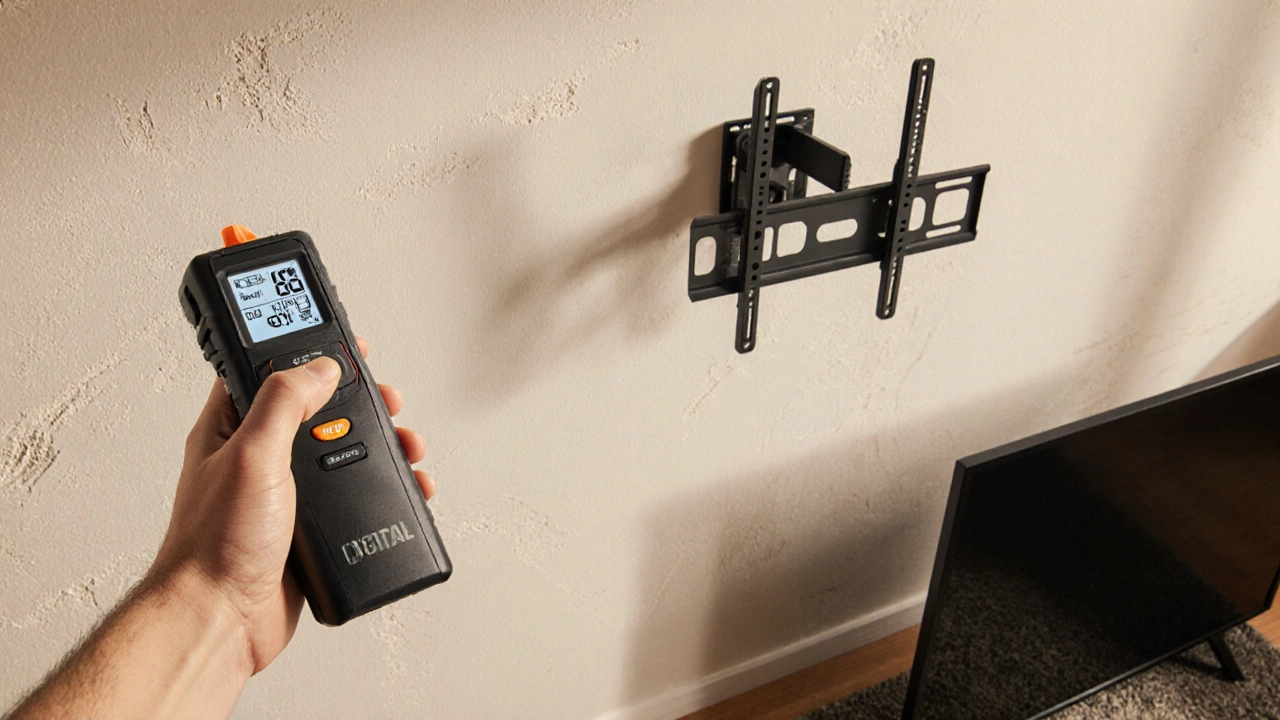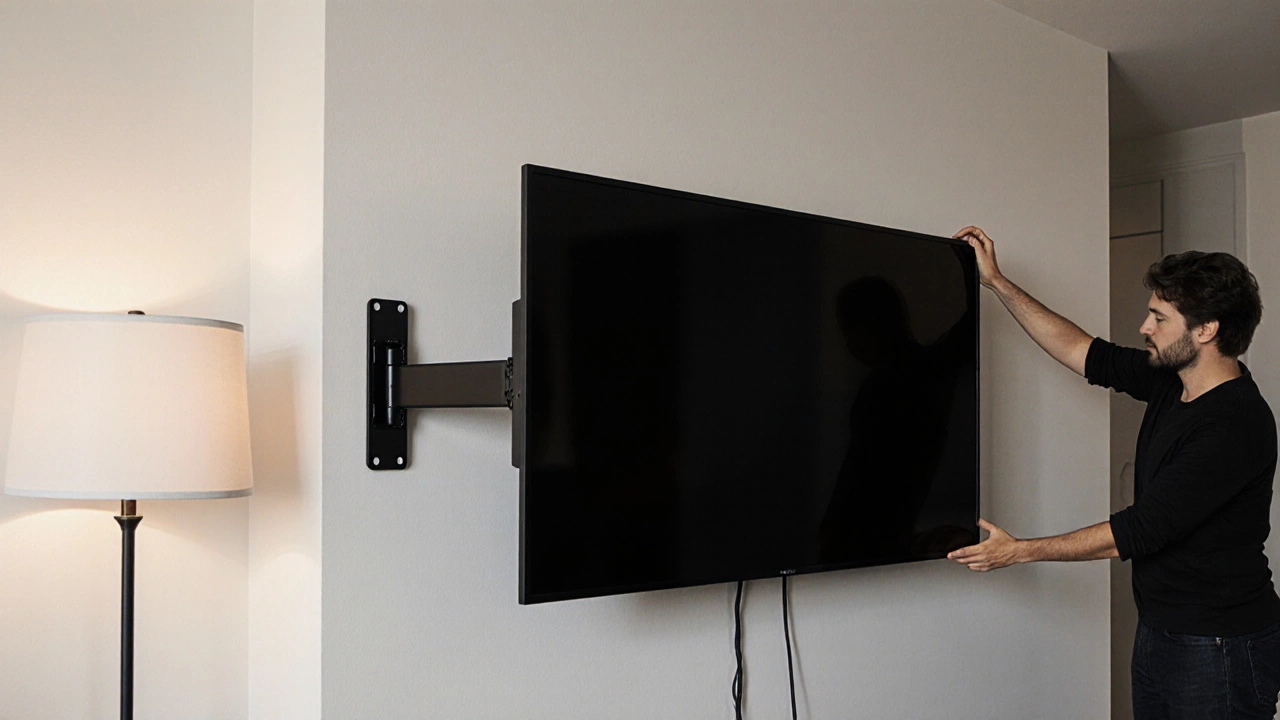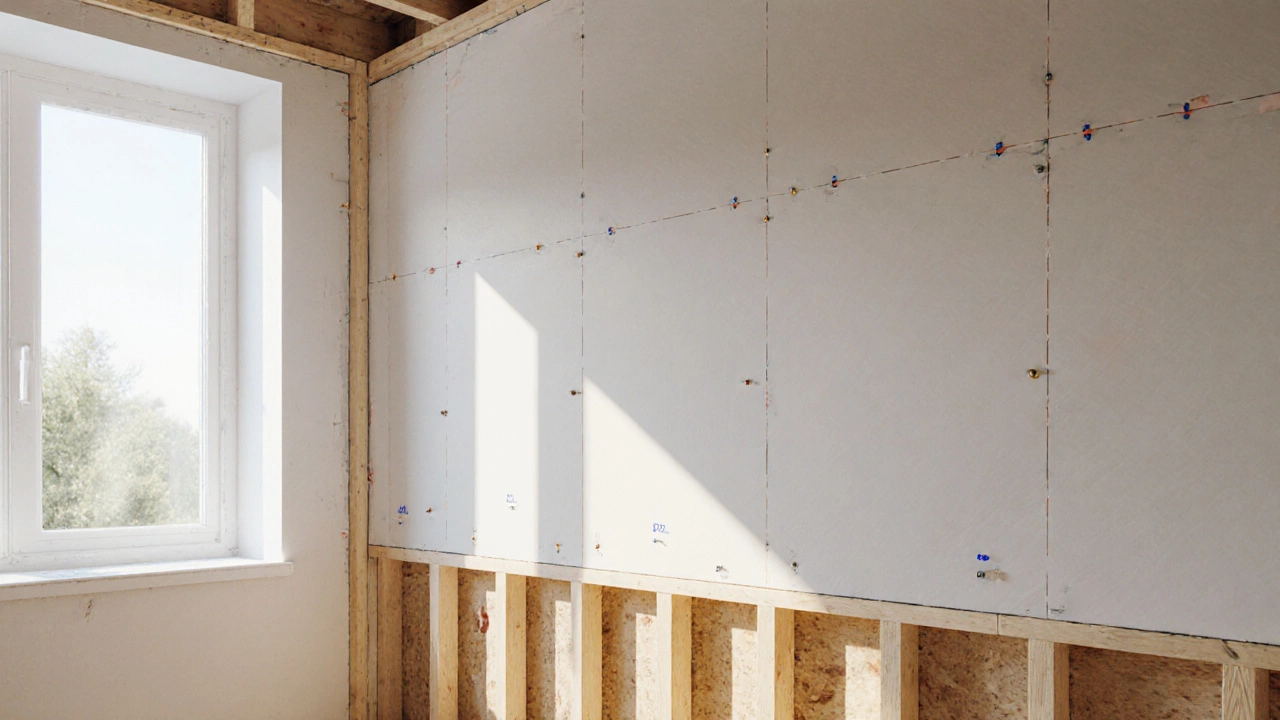TV Mounting Weight Calculator
When planning a Wall‑Mounted TV Installation in a brand‑new home, the excitement of a sleek, floating screen can quickly meet practical questions: Will the wall support the weight? Where are the studs? Do I need a permit?
Understanding the Skeleton of a New Build
New homes aren’t just drywall and paint - they start with a framework of timber or metal studs spaced typically 16 inches on centre. This grid is covered with plasterboard (often called drywall in the US) which provides the finished surface you see. Because the studs are the only solid points, any heavy object - like a television - must attach to them, not just the plasterboard.
Stud placement is usually marked on the plans, but you’ll still need to verify on‑site. In many new builds the contractors leave a faint pencil line or small nail at the stud locations, but never rely on that alone.
Choosing the Right Mount for Your TV
TV mounts come in three basic families, each suited to different viewing habits and room layouts. Below is a quick side‑by‑side comparison so you can pick the best fit for a fresh‑built living room.
| Mount Type | Adjustability | Typical Use‑Case | Installation Complexity |
|---|---|---|---|
| Fixed | None - sits flat against the wall | Low‑lying sofas, minimal glare | Easy - only two mounting points |
| Tilting | Vertical tilt (5-15°) | Rooms where viewers sit higher than the screen | Moderate - hinges add a step |
| Full‑Motion | Tilt + swivel (up to 180°) | Open‑plan spaces, multiple seating zones | Hard - requires extra support brackets |
For most new‑build master bedrooms, a tilting mount offers the sweet spot of flexibility without the extra hardware of a full‑motion system.
Finding the Studs - Tools and Tips
The first real step is locating those wooden or steel studs. A quality Stud Finder uses magnetic or electronic detection to pinpoint the centre of each stud. Here’s a quick routine:
- Turn on the stud finder and calibrate it on a known metal screw.
- Run the sensor horizontally across the wall; the device will indicate the edges of a stud.
- Mark the centre with a small pencil dot. Repeat every 16 inches to map the grid.
In a brand‑new build, the studs are usually free of insulation or wiring, making the detection process smoother than in retro‑fitted homes.

Building Regulations and Fire Safety
Even though you’re the homeowner, certain installations must meet local Building Regulations. For wall‑mounted TVs, the key points are:
- Mounts must be secured to load‑bearing studs, not just plasterboard.
- If the wall is part of a fire‑rated compartment (e.g., a bedroom adjacent to a hallway), the mounting hardware should be fire‑rated or approved by the local fire authority.
- Electrical cables routed behind the wall must comply with the Regulation 18 of the Wiring Regulations (BS 7671 in the UK, NEC in the US).
Check your developer’s handover documents - they often list the stud spacing and any fire‑rating specifications. When in doubt, a quick call to the local building control office can save you a costly retrofit.
Wiring and Cable Management
A clean look isn’t just about the mount; it’s about hiding the cables. There are three popular approaches:
- In‑wall cable kits - pre‑approved conduit that lets you run HDMI, power, and speaker wires between the TV and a nearby media console.
- Surface‑mount raceways - plastic tracks that stick to the wall and blend with paint.
- External cable ties and sleeves - the quickest solution, but less elegant.
For a new build, the Electrical Wiring is usually accessible behind the plasterboard. If you opt for in‑wall runs, you’ll need to cut two small openings (one for the TV side, one for the outlet), pull the cables through, and seal with fire‑stop putty.
Step‑by‑Step Installation Guide
Now that you’ve chosen a mount, found the studs, and sorted the cables, follow this checklist to safely mount your wall mounted TV:
- Gather tools: Stud finder, drill with appropriate bit (often 3/8" for wood, 1/4" for metal), level, tape measure, screwdriver set, pencil, and safety glasses.
- Mark the mount height: A common rule is to place the TV centre 42‑48 inches from the floor, but adjust for your sofa height and eye level.
- Align the mounting plate: Hold the plate against the wall, use the level to ensure it’s perfectly horizontal, and mark the screw holes on the stud line.
- Drill pilot holes: For timber studs, a ½" pilot hole is enough; for metal studs, use a self‑tapping bit.
- Attach the mounting plate: Secure with the lag bolts supplied by the mount manufacturer. Tighten to the torque specified (usually 20-30 Nm).
- Prepare the TV: Attach the corresponding bracket to the back of the TV using the provided screws. Double‑check the VESA pattern matches your mount.
- Hang the TV: With a partner, lift the TV onto the wall plate. Most full‑motion mounts have a lock or safety screw to prevent it from slipping.
- Run cables: Feed HDMI, power, and any audio cables through the in‑wall conduit or raceway. Connect and test the picture before finalising.
- Final adjustments: Tilt or swivel the TV as needed, then tighten all adjustment bolts.
- Seal and clean: Fill any small wall holes with spackle, sand smooth, and repaint if necessary.
Congratulations - you now have a cinema‑like experience without a bulky stand.

Tips & Common Pitfalls
- Don’t rely on plasterboard alone. Even a heavy‑duty “drywall anchor” can fail under the torque of a large screen.
- Check the load rating of your mount. A 55‑inch 4K TV can weigh 30‑40 lb; choose a bracket rated for at least 1.5 × that weight.
- If your walls use metal studs, you’ll need special toggle bolts or a mounting plate that spans multiple studs.
- Plan cable routes before you cut any holes - chasing cables later can damage the finish.
- Make sure the TV’s vents aren’t blocked by the mount; overheating reduces lifespan.
Quick Checklist Before You Start
- Stud locations marked and verified
- Mount type selected and load rating confirmed
- All required tools on hand
- Cable management plan finalized
- Local building regulations checked for fire‑rating requirements
- Partner available for lifting the TV
Frequently Asked Questions
Can I mount a TV on a plasterboard wall without studs?
No. Plasterboard alone cannot support the weight of a modern TV. You must anchor the mount into the timber or metal studs behind the board. If studs are unavailable, consider a freestanding media console instead.
Do I need a permit to mount a TV in a new build?
Usually not for a standard residential wall, but if the wall is part of a fire‑rated compartment or if you’re routing power cables in‑wall, you should confirm with local building control. Some jurisdictions require a minor electrical inspection.
What’s the ideal height for a wall‑mounted TV?
Place the centre of the screen about eye level when seated - roughly 42‑48 inches from the floor for most sofas. If you have a recliner or high chair, adjust accordingly.
Can I run HDMI cables inside the wall?
Yes, but the cables must be rated for in‑wall use (CL2 or CL3 in the US). Use a certified in‑wall cable kit and seal any openings with fire‑stop putty to meet code.
Is a full‑motion mount worth the extra cost?
If you have multiple viewing spots or need to hide the TV behind décor, a full‑motion mount adds flexibility. For a single‑viewing area, a tilting mount is generally sufficient and easier to install.







